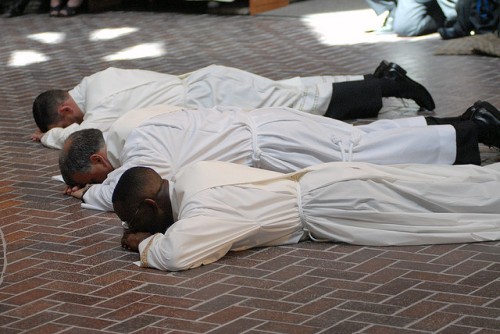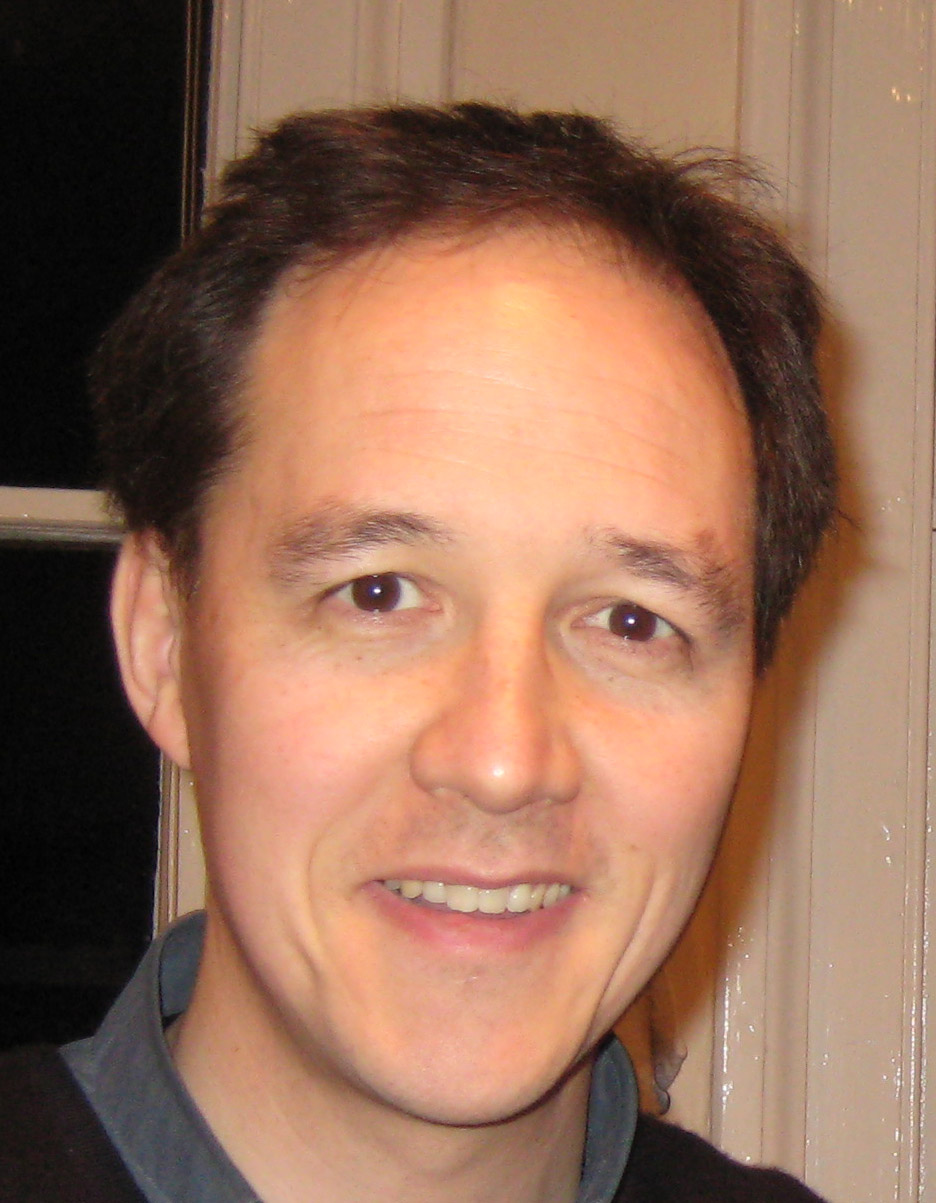
Celibacy is in the air again. Or rather, Cardinal O’Brien’s recent comments have stirred up a debate about the obligation of celibacy for Catholic priests in the Western Church.
I thought I’d copy here a personal reflection on celibacy, and then some historical notes. The personal reflection is from something I wrote for the BBC News website three years ago; and the historical sections are copied from a recent post by Fr Tim Finigan.
This is the short piece I wrote for the BBC:
On 13 July 1997 I made a lifelong commitment to celibacy. In a chapel overlooking Lake Albano on the outskirts of Rome I promised to remain unmarried ‘for the sake of the kingdom and in lifelong service to God and mankind’.
I had a real sense of peace that day, but a few months earlier I had been in turmoil. I knew all the theory: Catholic priests were following the example of Christ; celibacy gave you a freedom to serve others, etc. But it hadn’t become real for me.
I was wrestling with all this one afternoon that spring. I realised that I had been seeing celibacy in negative terms: ‘No’ to marriage, ‘No’ to sex, ‘No’ to children – when in reality it was a profound ‘Yes’. It was a way of putting Christ at the centre of your life, of giving your whole heart to those you would serve as a priest. It was a way of loving others with a generosity that wouldn’t be possible if you were a husband and father. Celibacy wasn’t a negation or a denial – it was a gift of love, a giving of oneself, just as much as marriage could be.
My experience over the years has confirmed this. Yes, there are practical aspects to celibacy. You’ve got more time for other people, and more time for prayer. You can get up at three in the morning to visit someone in hospital without worrying about how this will affect your marriage. You can move to a bleak estate in a rough part of town without thinking about how this will impact on your children’s schooling.
But celibacy is something much deeper as well. There is a place in your heart, in your very being, that you have given to Christ and to the people you meet as a priest. You are not just serving them, you are loving them as if they were the very centre of your life – which they are. I think Catholics sense this. They know that you are there for them with an undivided heart, and it gives your relationship with them a particular quality.
It’s true that you can’t speak from experience about every aspect of human life. But you gain an awful lot of understanding from sharing in people’s lives over the years. Husbands and wives will confide in a sympathetic priest. You end up drawing on this experience as you preach and counsel people. Besides, people want a priest because he will show them the love of Christ, and not because he has lived through all ups and downs that they live through.
There are struggles. Times of loneliness; sexual desires; dreams about what marriage and fatherhood would be like. I don’t think most of this is about celibacy – it’s about being human. The husbands I know struggle with the same things, only they dream about what it would be like to have married someone else! What matters is trying to be faithful, instead of pretending that another way of life would be easy.
You need balance in your life, you can’t be giving all the time – this was emphasised in our training. You need affection and human intimacy. I’ve got some wonderful friends. I get home to see my family every couple of weeks. I escape to the cinema now and then. And I pray. Not to fill the gaps, because some of them can never be filled, but because the love of Christ is something very real and very consoling.
I’ve been incredibly happy as a priest over these twelve years. I don’t think about celibacy a lot now – it’s just part of my life. But I’m aware that it gives me a freedom of heart that is a unique gift. It helps me stay close to Christ, and draws me closer to the people I meet each day.
And these historical comments are taken from Fr Tim Finigan’s post, “Some notes on clerical celibacy“:
In the synoptic gospels we hear of how Our Lord cured Simon Peter’s mother-in-law from fever. In the discussion of clerical celibacy, this text is routinely brought out as a knock-down argument. The apostles were married so why can’t priests marry? Oddly, though, we never hear anything of St Peter’s wife, or indeed of any of the wives of the other apostles.
“Then Peter said: Behold, we have left all things, and have followed thee. Who said to them: Amen, I say to you, there is no man that hath left house, or parents, or brethren, or wife, or children, for the kingdom of God’s sake, who shall not receive much more in this present time, and in the world to come life everlasting. (Lk 18.28-30)”
This suggests the possibility that St Peter had in fact left his family to follow the Lord. Such a course of action would be unacceptable in our time, but in the culture of Palestine in the time of Our Lord, the extended family would mean that it was possible.
Then we come to St Paul’s injunction in 1 Timothy 3.2 that the Bishop should be the husband of only one wife. It would be improbable to suggest that St Paul was dealing with a problem of polygamy. Much more likely he was saying that the Bishop should not be someone who had married a second wife after his first wife had died.
These indications from scripture are tantalising but need further illumination. Fortunately, there have been a number of studies that have cast light on the historical practice of the Church, arguing that the discipline of clerical celibacy is of apostolic origin.
Christian Cochini presented the historic debate between Bickell and Funk over certain key texts from the Council of Nicea, the Council of Elvira and others. He also exhaustively examined all of the cases from the first seven centuries of the Church’s history which were relevant to the issue of clerical marriage. His work supported the thesis that there was an apostolic rule of continence for those clerics who were married and that the legislation of the Church against the clerical use of marriage is witness to this ancient tradition.
Roman Cholij examined in particular the Council in Trullo of 691, concluding that the Council’s permission for the clerical use of marriage was an innovation, giving rise to the legislative anomaly in the East (and occasionally in the West) whereby married men may be ordained but ordained men may not marry. This law, which is still a part of modern codes of canon law, makes little sense apart from the historic rule of continence…
Cardinal Stickler’s brief account is a most useful summary of the case for clerical celibacy. He notes that there have been a number of important recent studies devoted to the history of celibacy in both the East and the West, and that these studies have either not yet penetrated the general consciousness or they have been hushed up if they were capable of influencing that consciousness in undesirable ways.
This unfortunately remains the case as articles continue to appear without finding it necessary even to address the research of these scholars.
The later imposition of a rule that clerics should be unmarried was a recognition of the growing impracticality, with the development of marriage, and the problems of inheritance, of ordaining men who had been previously married, even if there were a rule of continence. It obviously makes sense today when people would find it hard to understand a system in which men who are married would be expected to change and live a life of continence…
Throughout the history of the Church, the discipline of clerical continence or celibacy has been transgressed by some clerics. The Church has consistently fought to reform the life of clerics in the face of immorality which has been greater at some times than others. Today we live in a time when reform is needed again. We should remember that when St Charles Borrommeo went to Milan, the vast majority of his priests were living in concubinage – and he reformed his diocese. The Council of Trent was largely successful in reforming the clergy.
At the present time, we should give thanks for the faithfulness and purity of most students and young priests. They have been formed at a time when appallingly bad example has been given by some of their senior brethren. They have reckoned the cost and turned into the storm with courage and resolution. Let us pray that they become the vanguard of the new reform of the clergy, following in the footsteps of their forbears in the counter-reformation and at many other times in the history of the holy Roman Church.
References
Cholij, R. Clerical Celibacy in East and West Gracewing. Herefordshire. 1989
Cochini, C. The apostolic origins of priestly celibacy Ignatius. San Francisco. 1990
Heid, S. Celibacy in the Early Church. Ignatius. San Francisco. 2000
Stickler, A. The case for clerical celibacy Ignatius. San Francisco. 1995
Read Full Post »











